


Michael Küffmeier (Marie Skłodowska-Curie global fellow)
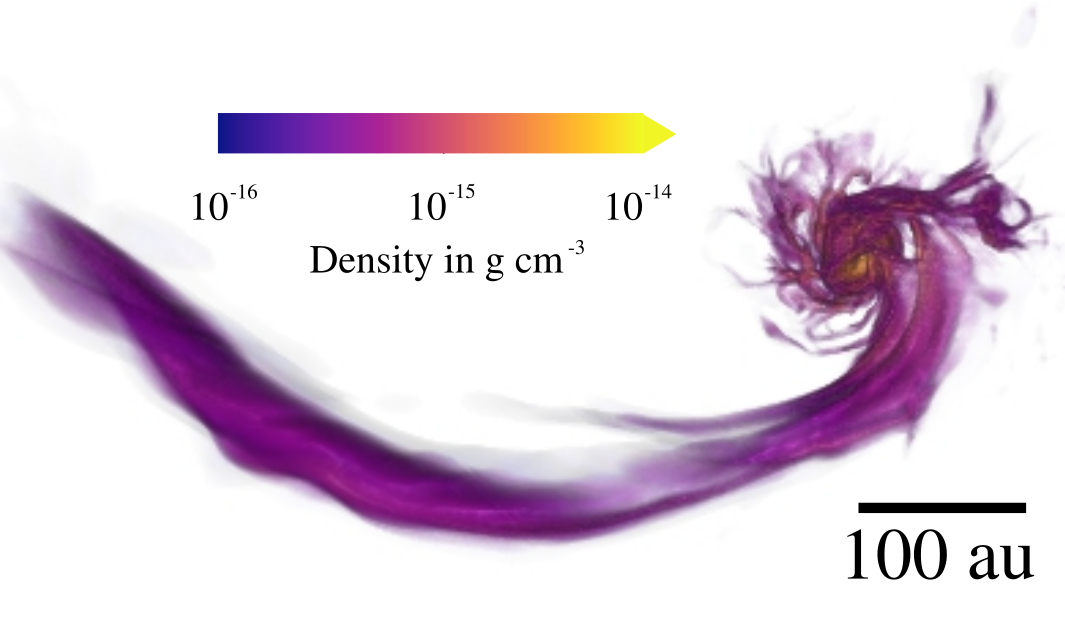
Rejuvenating infall: an overlooked source of mass and angular momentum
Sigurd Jensen, Jaime Pineda, Paola Caselli (all MPE), Troels Haugbølle (NBI)
Let's go back in time to the year 2014
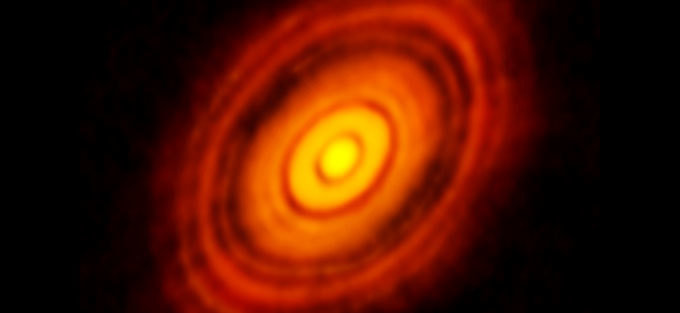
The classical picture
credit: M. Persson
star formation
planet formation

Is this the full picture?
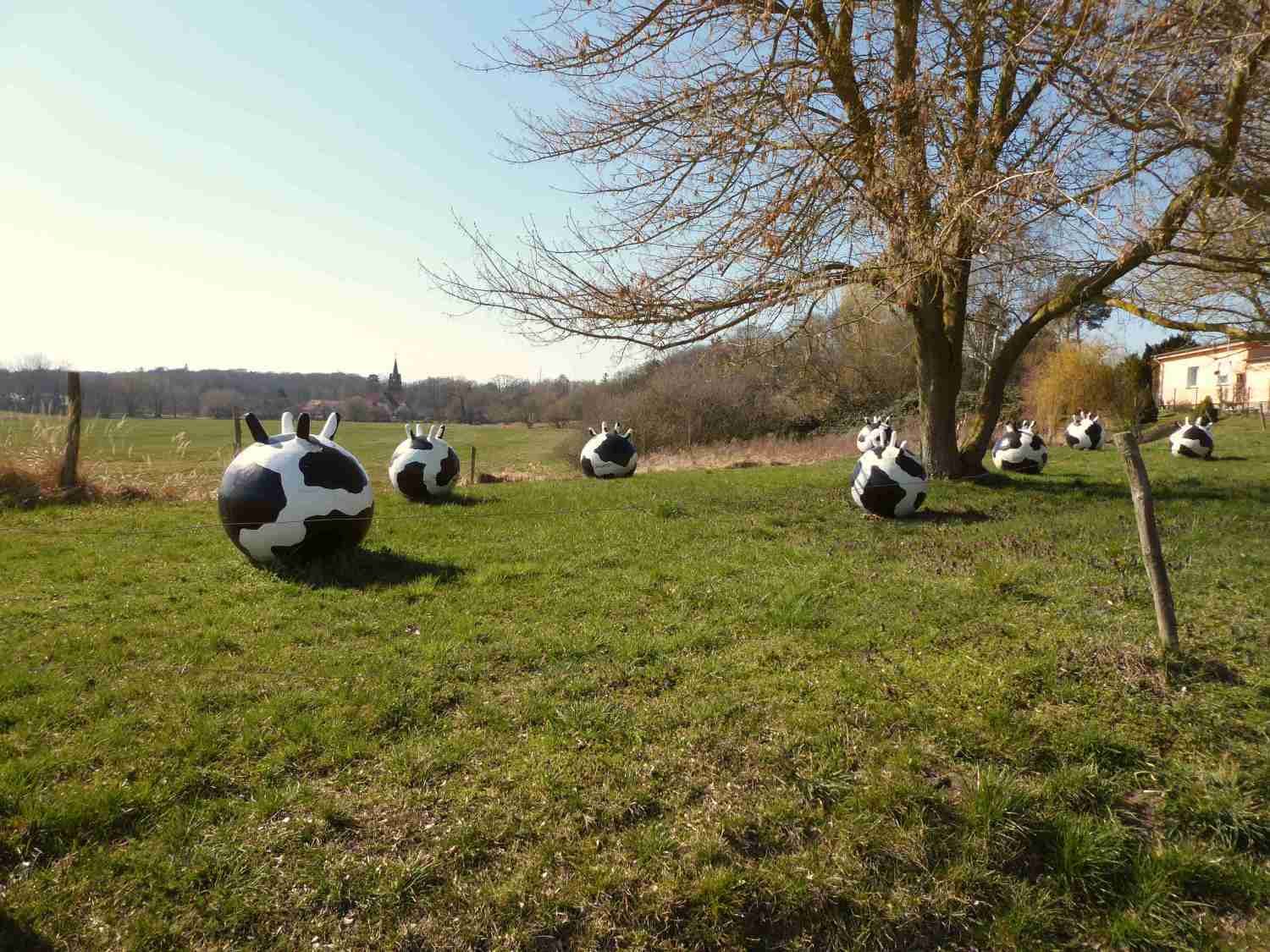
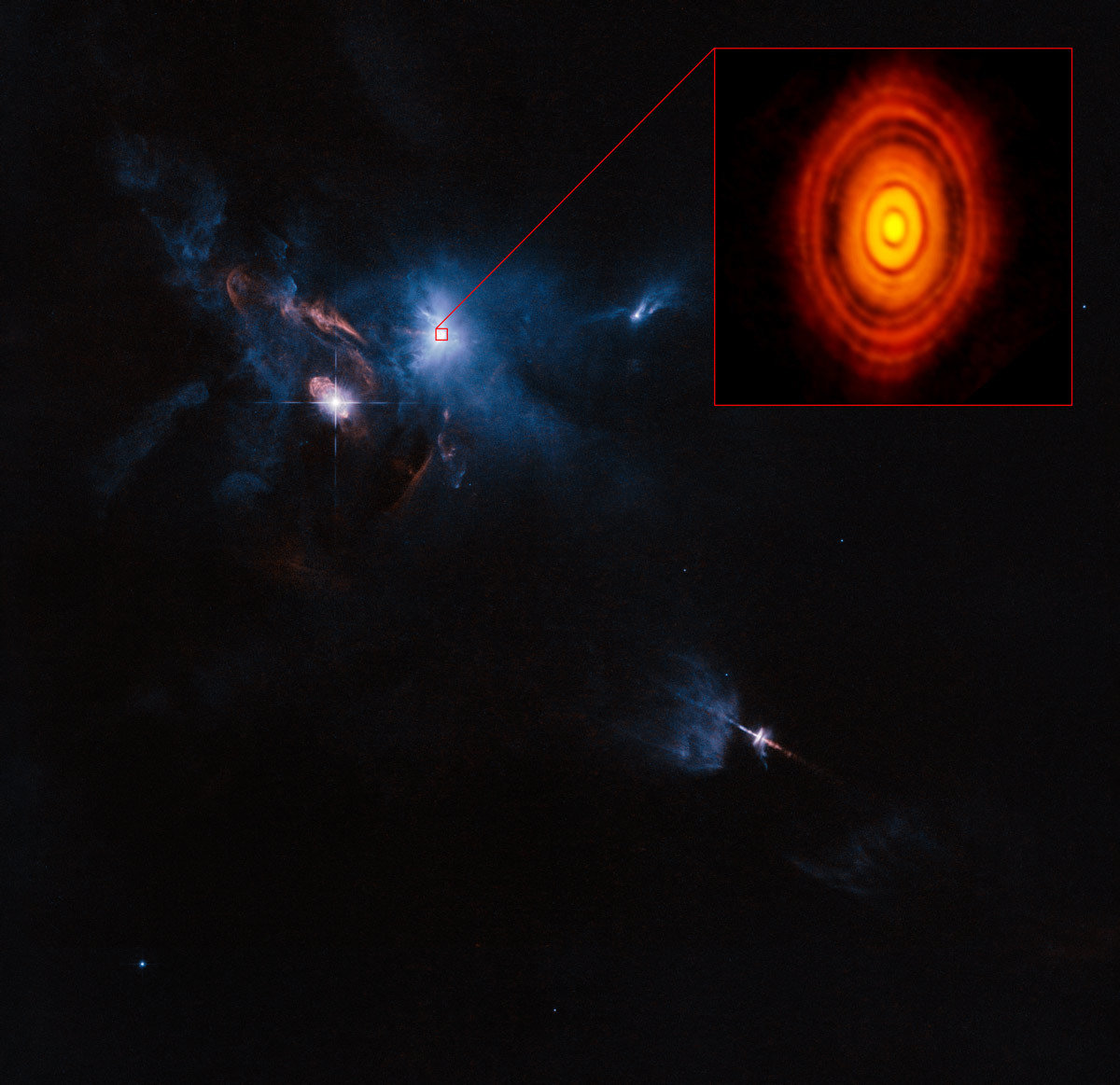
Credit: ALMA (ESO/NAOJ/NRAO)
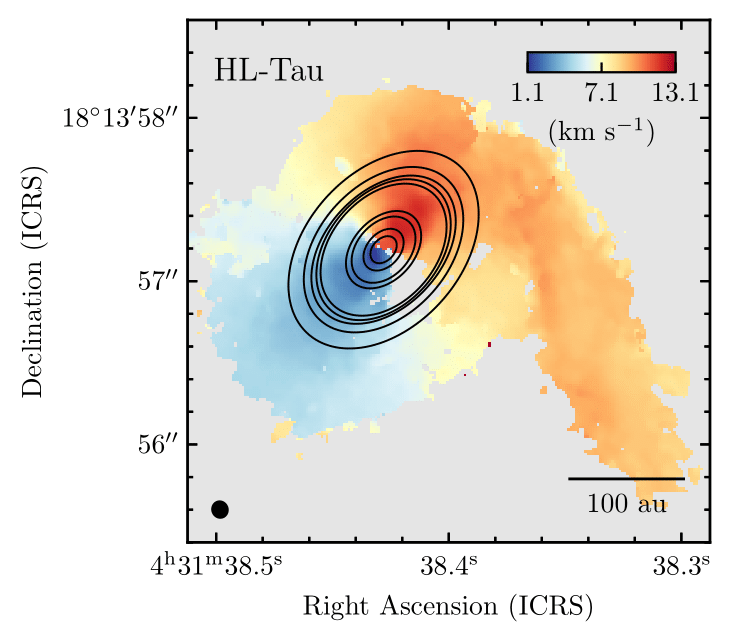
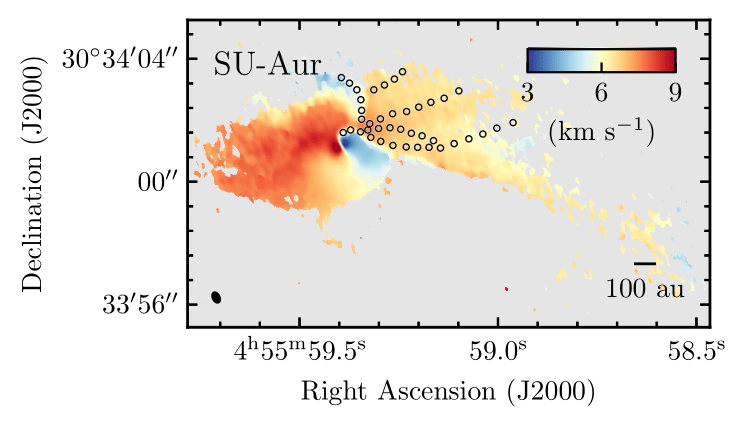
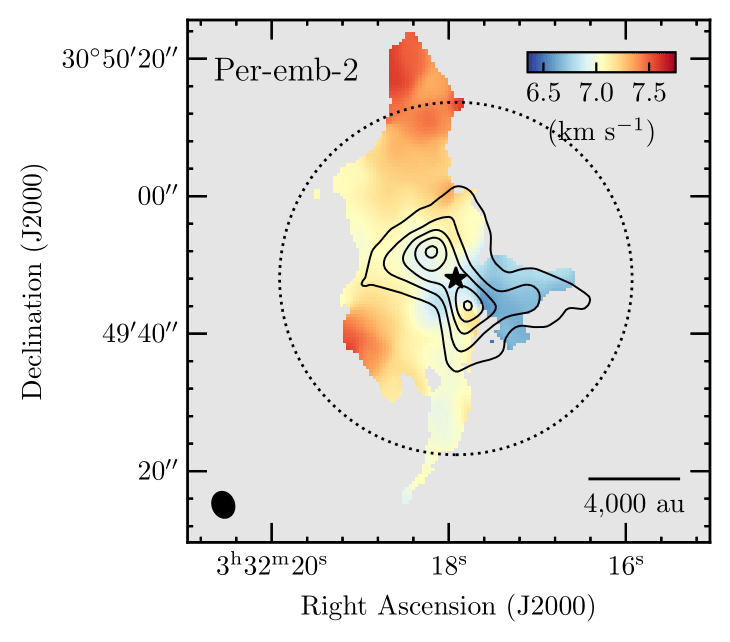
Ginski et al. 2021
Yen et al. 2019
Garufi et al. 2021
Pineda et al. 2020
50 au
see also:
BHB1 (Alves et al. 2020), GM Aur (Huang et al. 2021), IRS 63 (Segura-Cox in prep.), AB Aur (Grady et al. 1999 / Fukagawa et al. 2004), ...
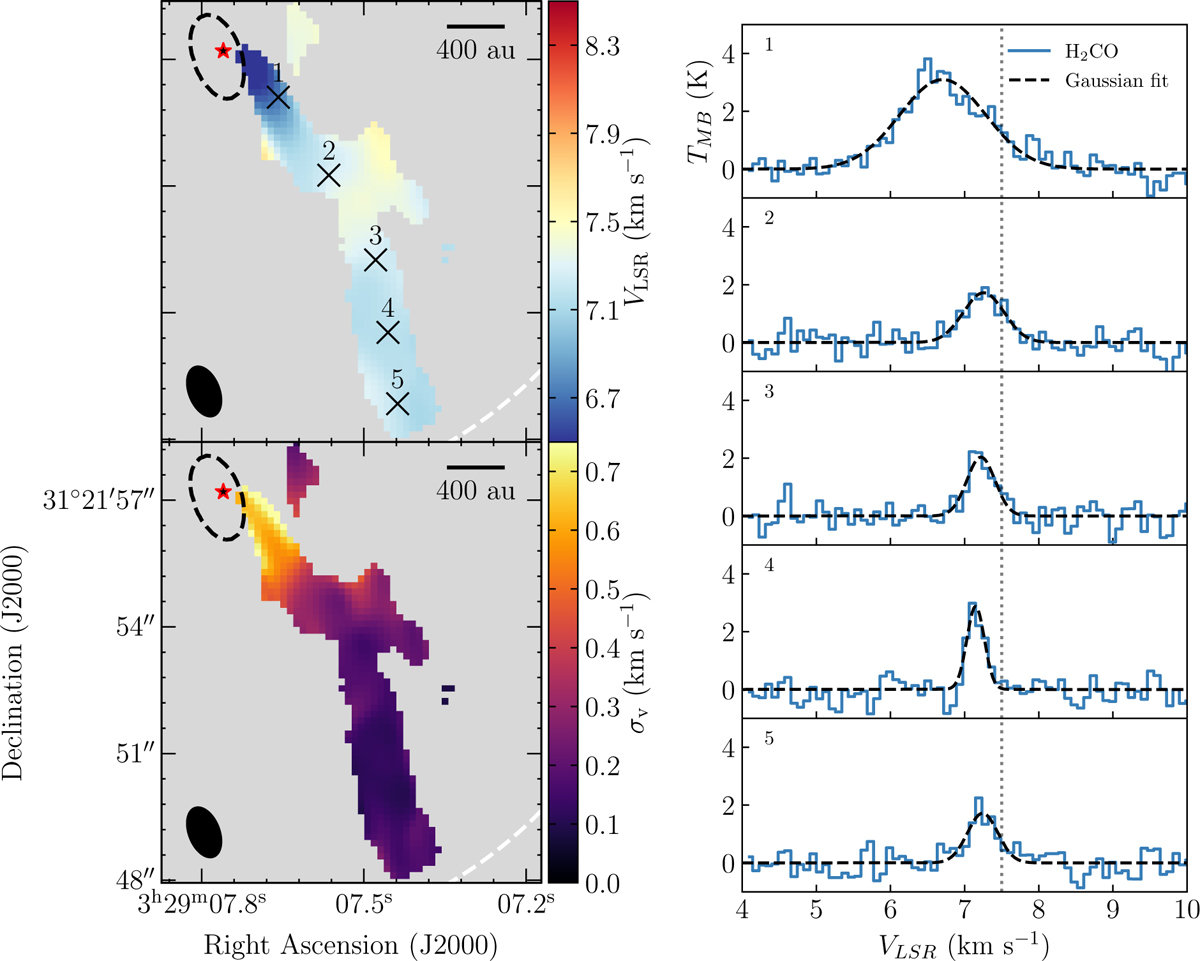
Per-emb-50
Valdivia-Mena et al. 2022
Science question:
Can we get better (statistical) constraints on the relevance and importance of (late) infall from existing simulation data?
Streamers: recall S. Heigl's talk
Model star formation in a Molecular Cloud
isothermal magnetohydrodynamical (MHD) with driven turbulence
adaptive mesh refinement (AMR) simulations with RAMSES
maximum resolution: ≈25 au (level of refinement: 15), root grid about ≈1600 au (level 9)
Total mass: 3000 solar masses
periodic boundary conditions
altogether 321 sink particles at last snapshot (2 Myr after the formation of the first star)

simulation setup including detailed description of sink recipe presented in Haugbølle+2018
Küffmeier, Jensen & Haugbølle '23
Late infall is common for stars*
*unless they remain tiny
On average, stars with final masses of more than 1 solar mass accrete more than 50 % of their mass after 500 kyr
Note that some protostars still accrete after 1.2 Myr
Küffmeier, Jensen & Haugbølle '23
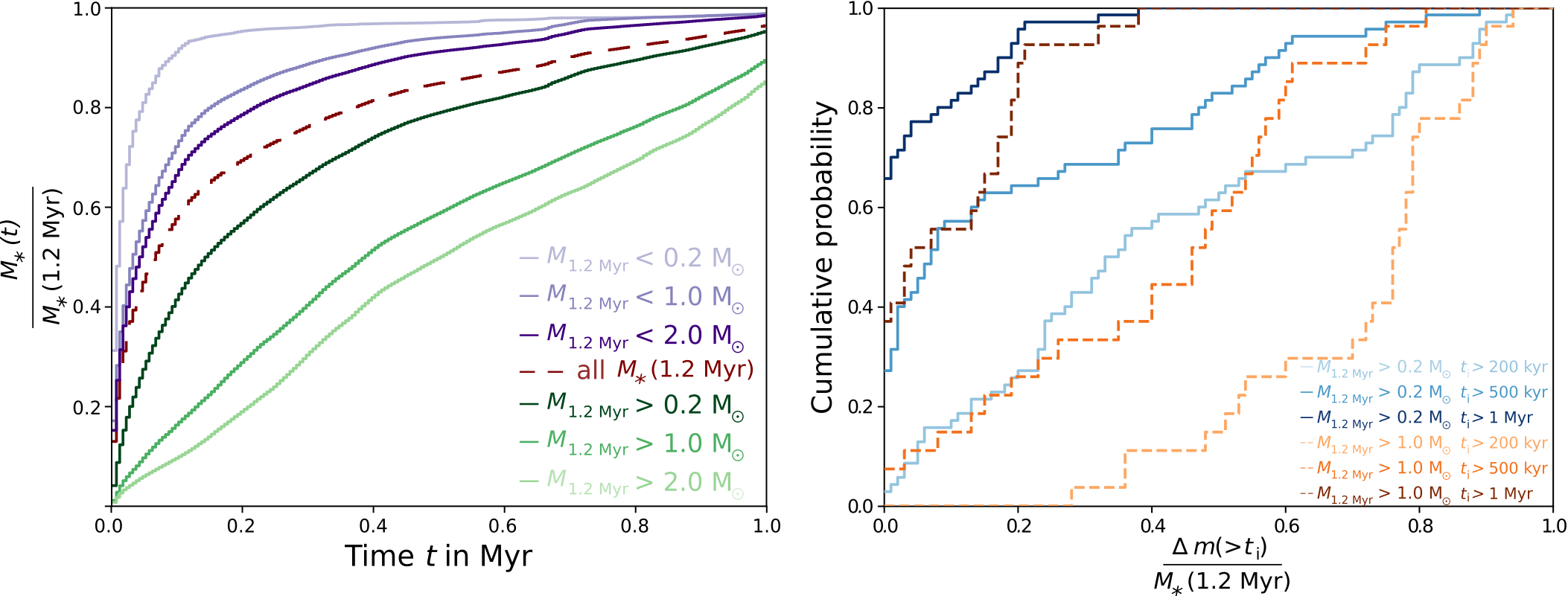
Origin of accreting gas
The accretion reservoir can extend beyond the core
(see also Smith+ 2011, Kuznetsova et al. 2020, Pelkonen+ 2021)
Two phase process:
Initial collapse followed by varying amount of post-collapse infall
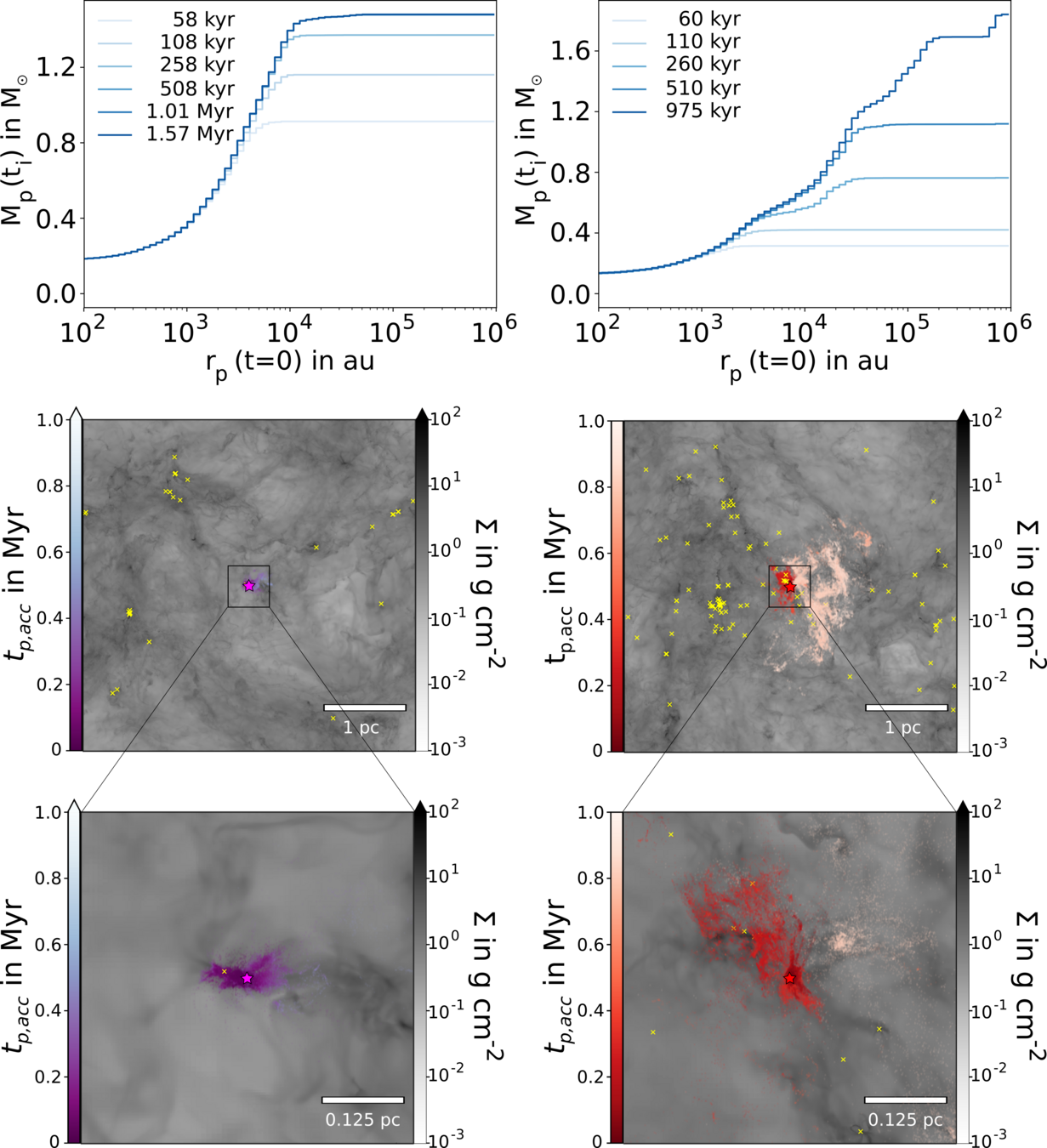

Results:
Possibility of replenishing and refreshing the mass and chemical budget
Küffmeier, Jensen & Haugbølle '23
YSOs can appear younger than they really are
How old is the protostar?




Küffmeier, Jensen & Haugbølle '23
A poor analogy to a conference
Session start
Coffee break!






Streamers (and shadows?) as signs of infall
Formation of misaligned configuration
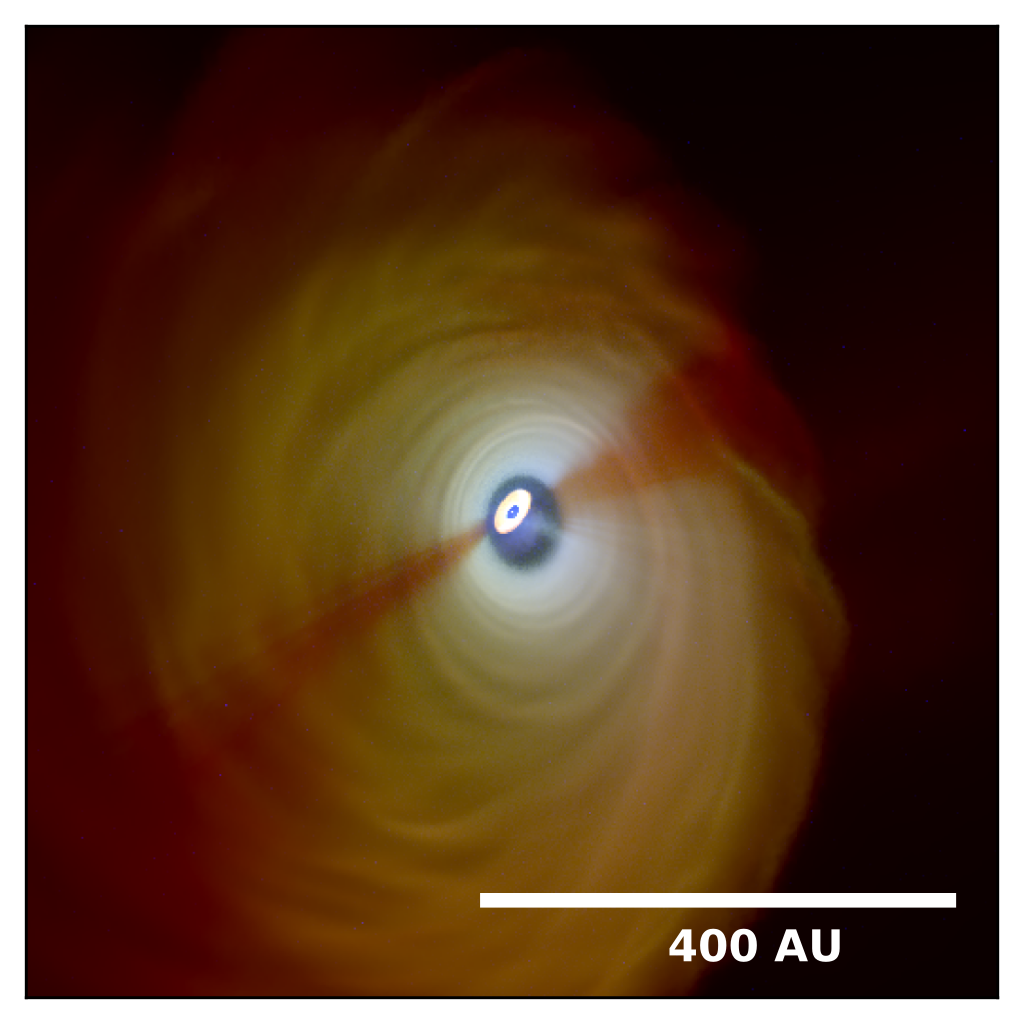
Observable as shadows in outer disk
Küffmeier, Dullemond, Reissl & Goicovic 2021

Ginski et al. 2021 (see also poster#32 by Labdon)
300 au
in agreement with Bate 2018
Summary
Pineda ... Küffmeier et al. 'Protostars and Planets VII'
.
.
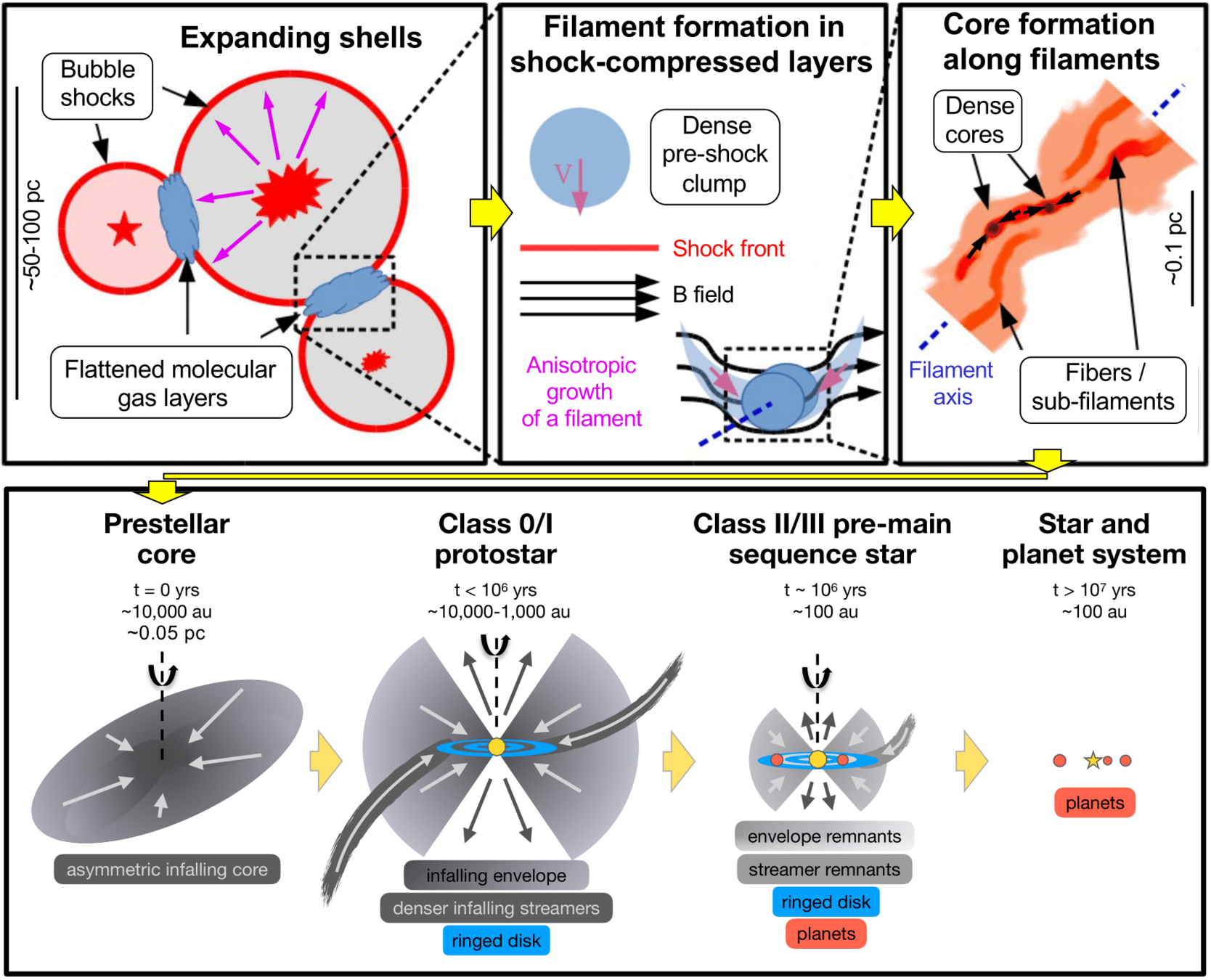
Segura-Cox et al. in prep.
Star & disk can be replenished by infall of initially unbound material
YSOs can be rejuvenated
talks by Bate, Price and Elsender; posters by Koumpia and Ambrose
talks by S. Federmann and M. Reiter
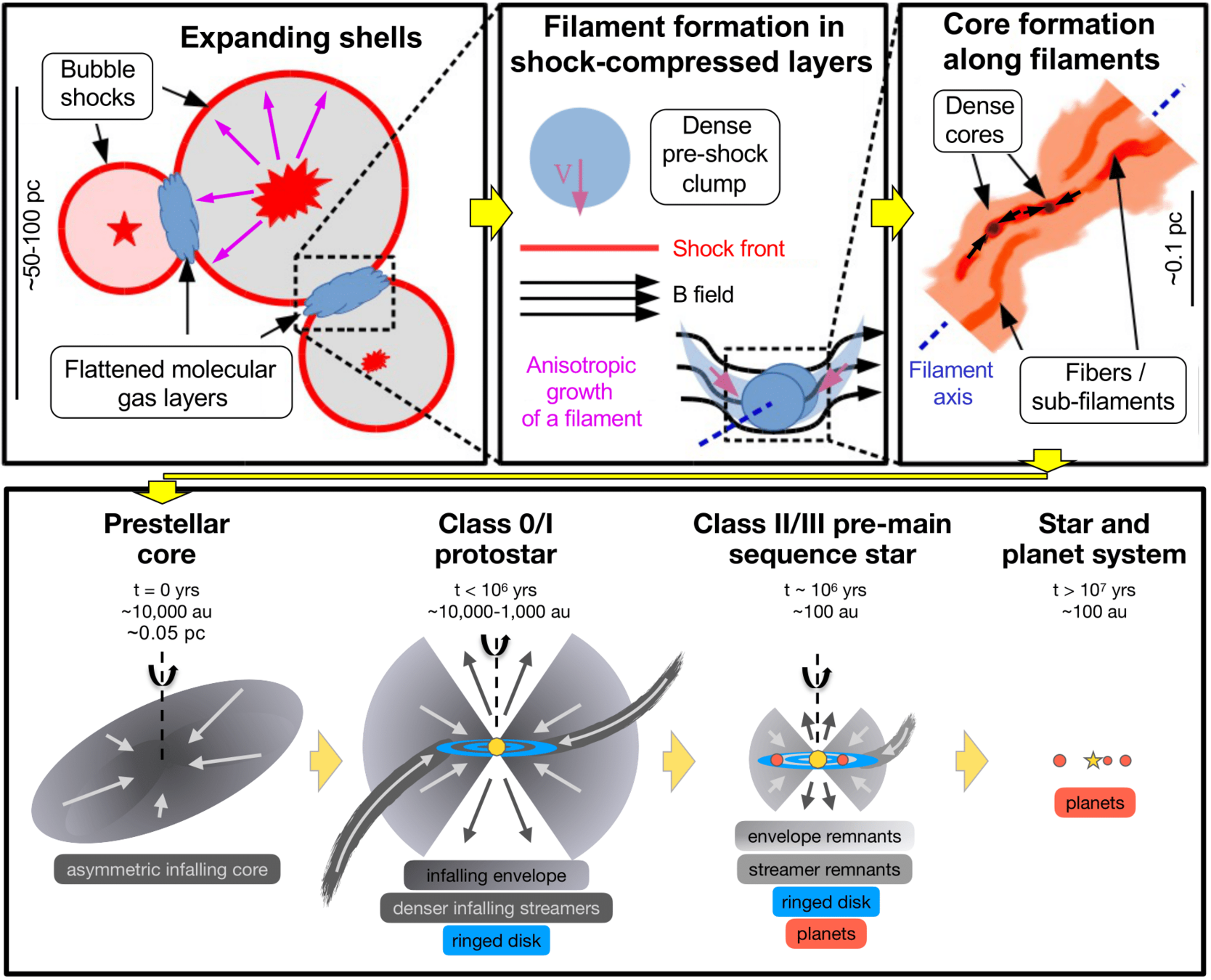

Zoom-in on embedded protostars

Küffmeier, Calcutt & Kristensen 2019
bridge structure similar to IRAS 16293--2422 (e.g. Sadavoy+ 2018, van der Wiel+ 2019, Maureira+ 2020)
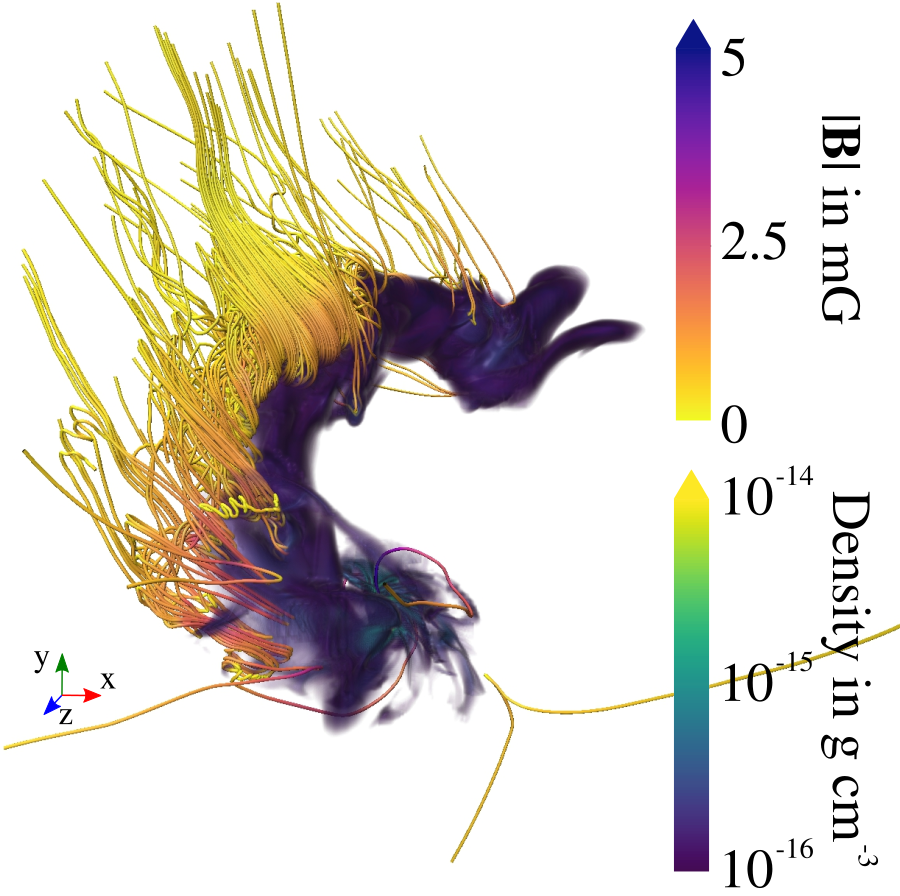
Küffmeier, Reißl et al. 2020
~1500 AU
Küffmeier et al. 2018
The connection to the larger scales

Küffmeier, Haugbølle & Nordlund 2017
Angular momentum budget
- Large scatter of ang. mom.
- Increasing specific angular momentum for increasing final stellar mass
Specific angular momentum computed from all accreting tracer particles at the first snapshot after star formation
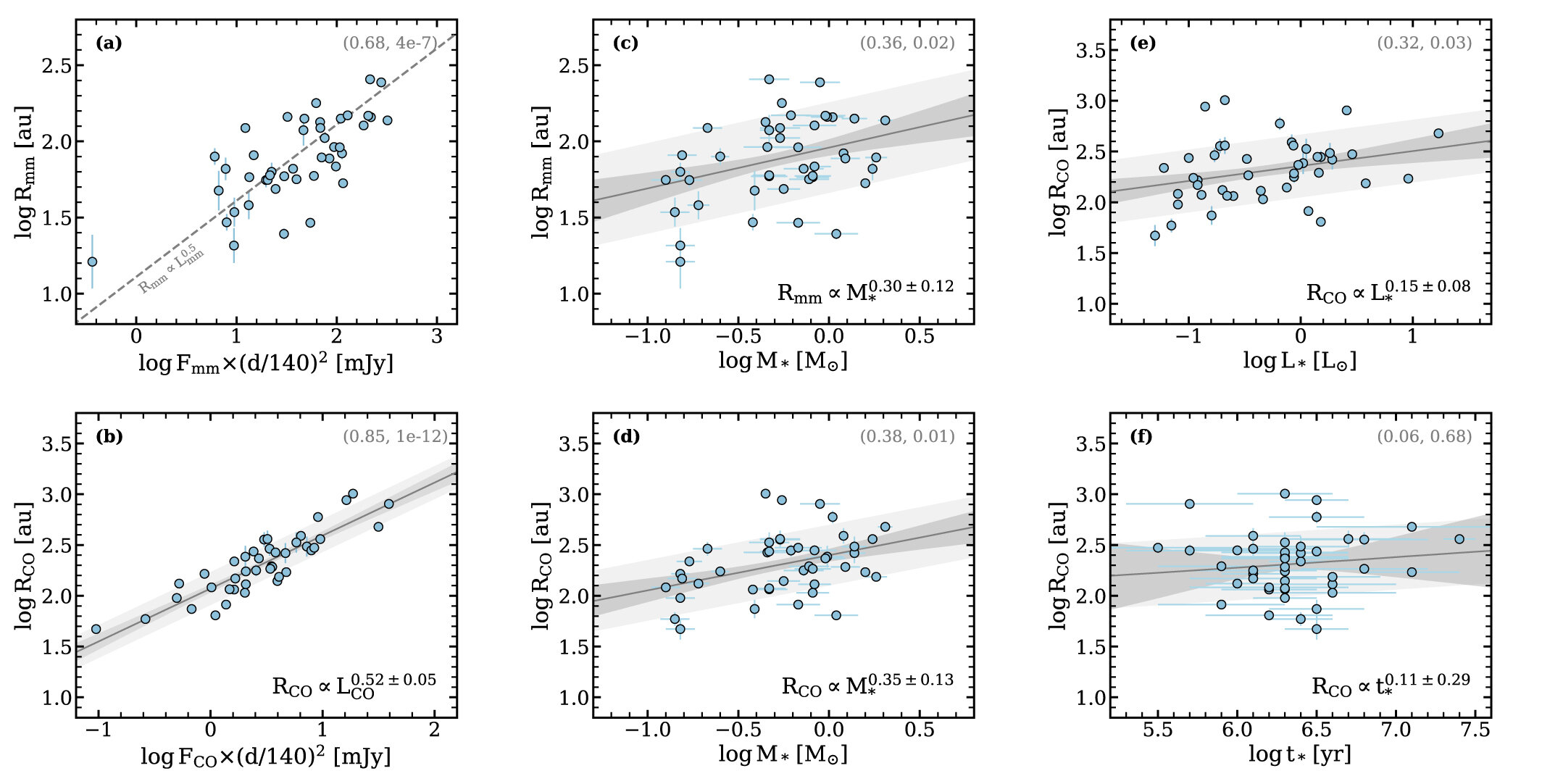
- subtle correlation with mass (inherited by disks??)
"We find marginal relationships between disk sizes and M*." (Long+ 2022)
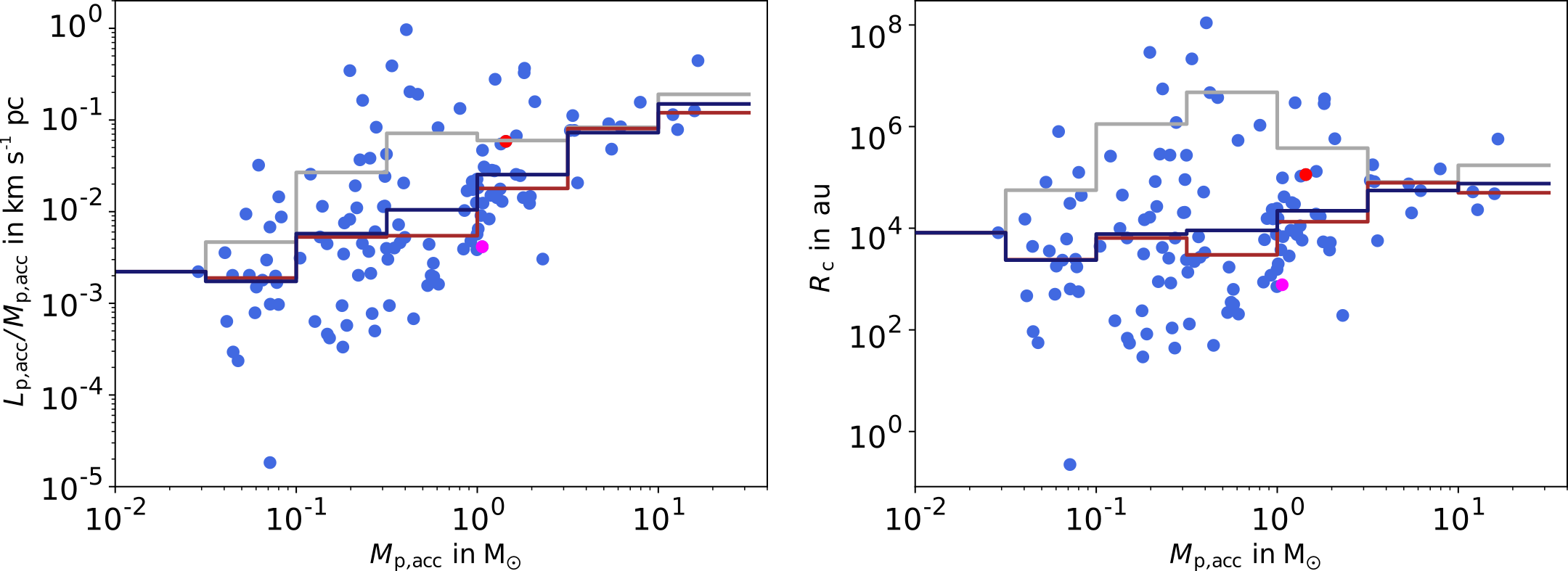
Küffmeier, Jensen & Haugbølle '23
Accretion of a binary system
zoom-in with maximum resolution of 3 AU; polytropic equation of state; ideal MHD
1000 au
Accretion of a binary system
Caveat: zoom-in with only maximum resolution of 3 AU; polytropic equation of state; ideal MHD; no radiative transfer (more to be done, but intriguing)
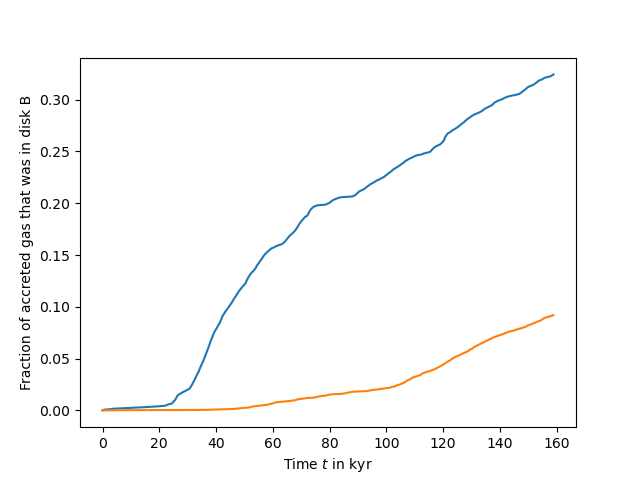
about 30 % of accreting mass goes through the star's own disk
almost 10 % of accreting mass of companion goes through the primary star's disk
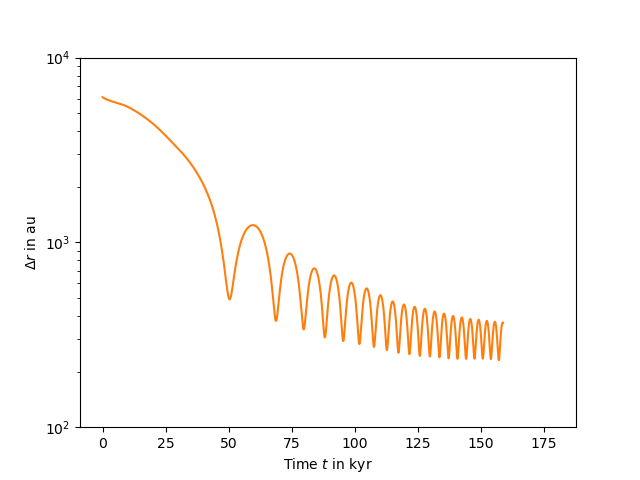
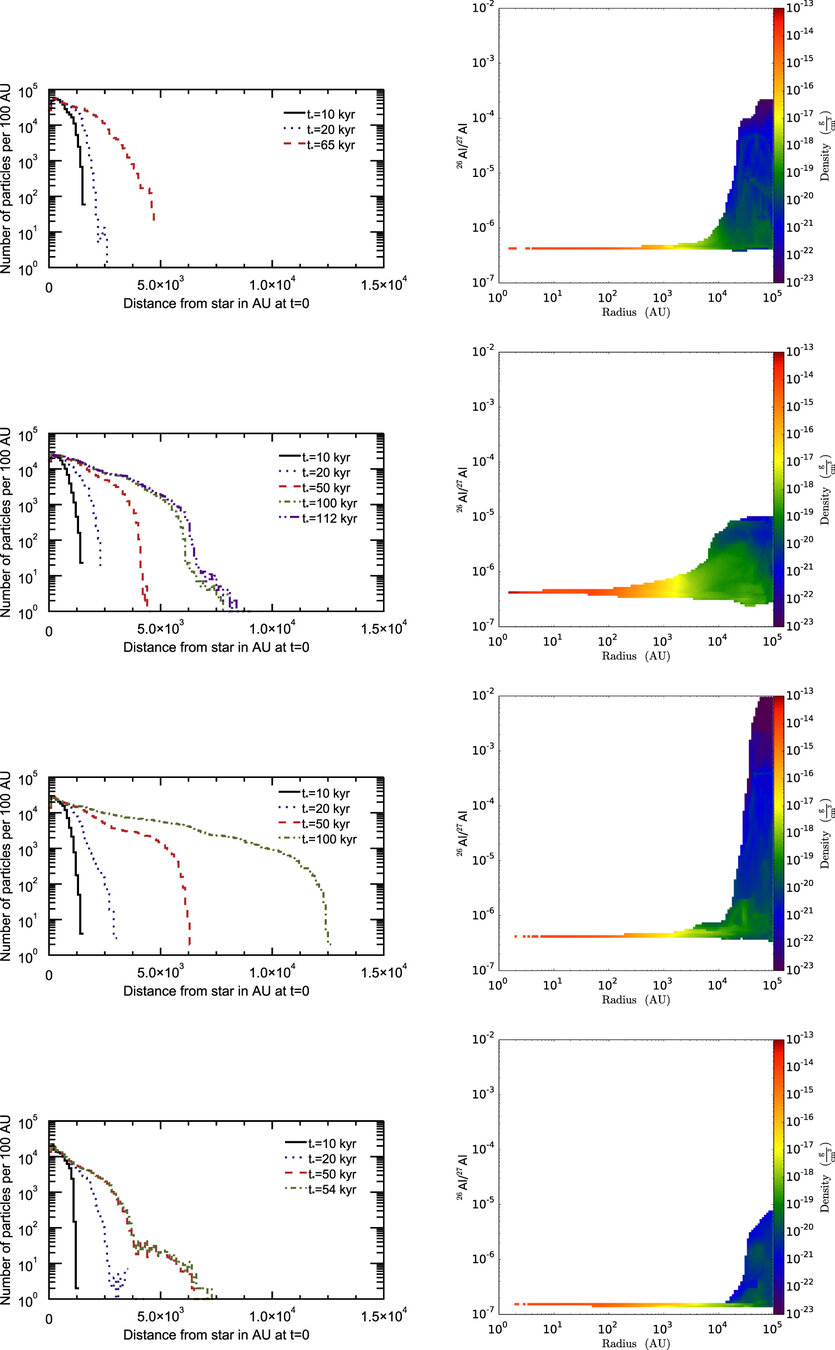

Late infall happens more often than assumed
For solar mass stars ~50 % of final mass from beyond prestellar core! (Pelkonen et al. 2021)
Can disks be rejuvenated?
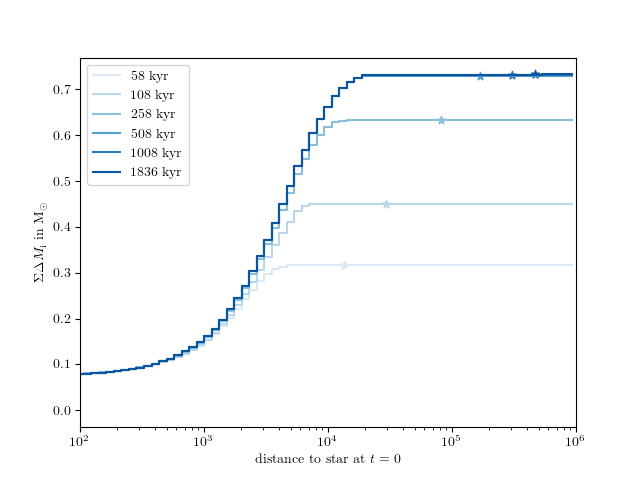
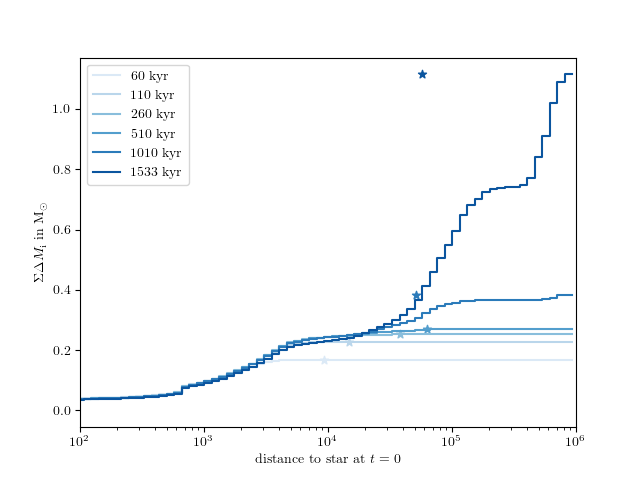
Küffmeier et al. 2022 in prep
Possibility of replenishing and refreshing the mass and chemical budget

It's fun to work on cosmic rays,
instead of catching Covid waves.


Does cosmic-ray ionization play a crucial role in disk formation?
The connection to the larger scales

Küffmeier et al. 2017 / 2022 in prep.
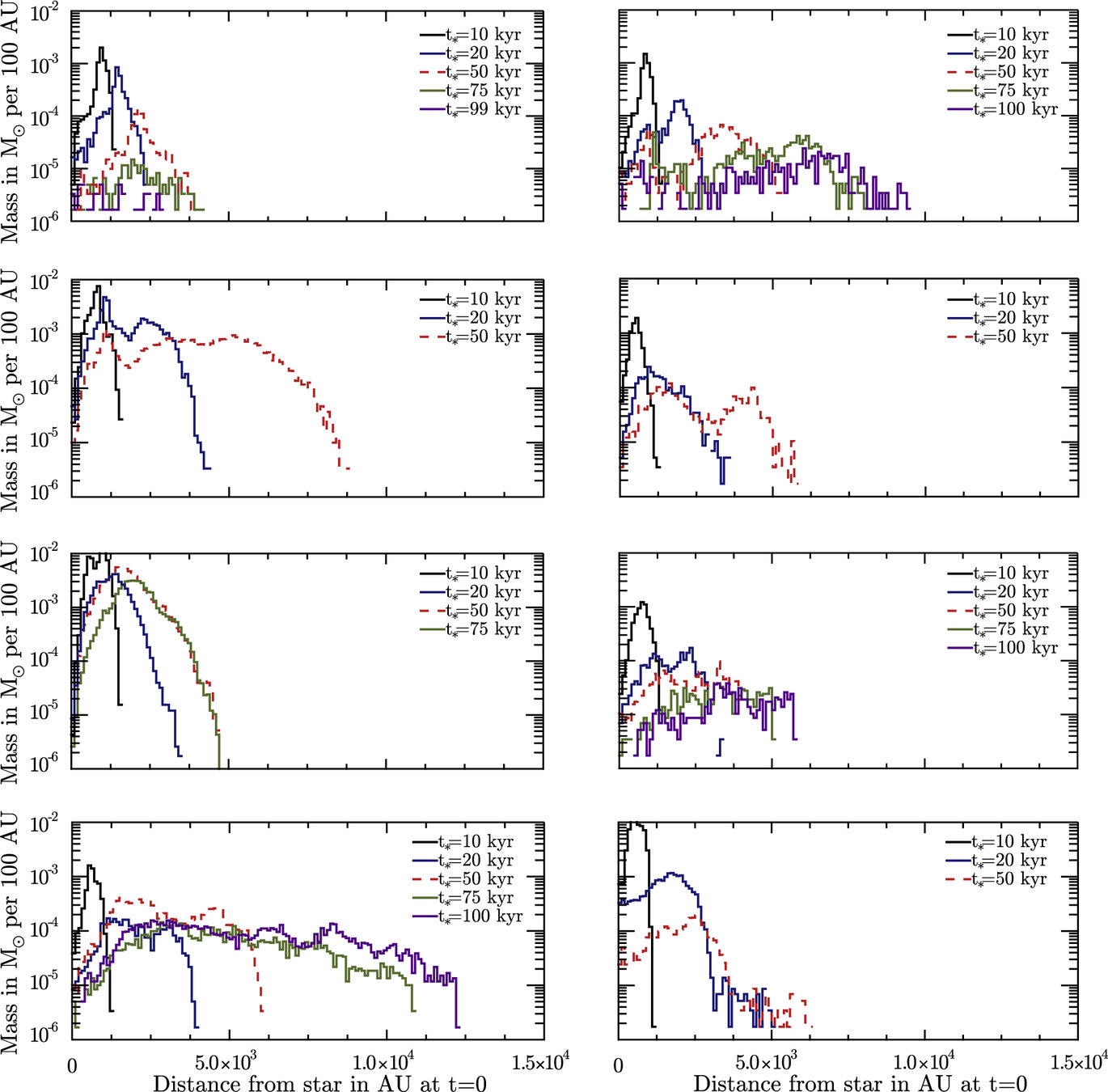
Gas from beyond the prestellar core can fall onto the star-disk system
Simulate cloudlet infall onto disk
AREPO, pure hydrodynamical
isothermal gas
vary infalling angle
vary rotation (prograde, retrograde)
Küffmeier, Dullemond, Reißl, Goicovic et al. 2021
Outer disk forms around inner disk
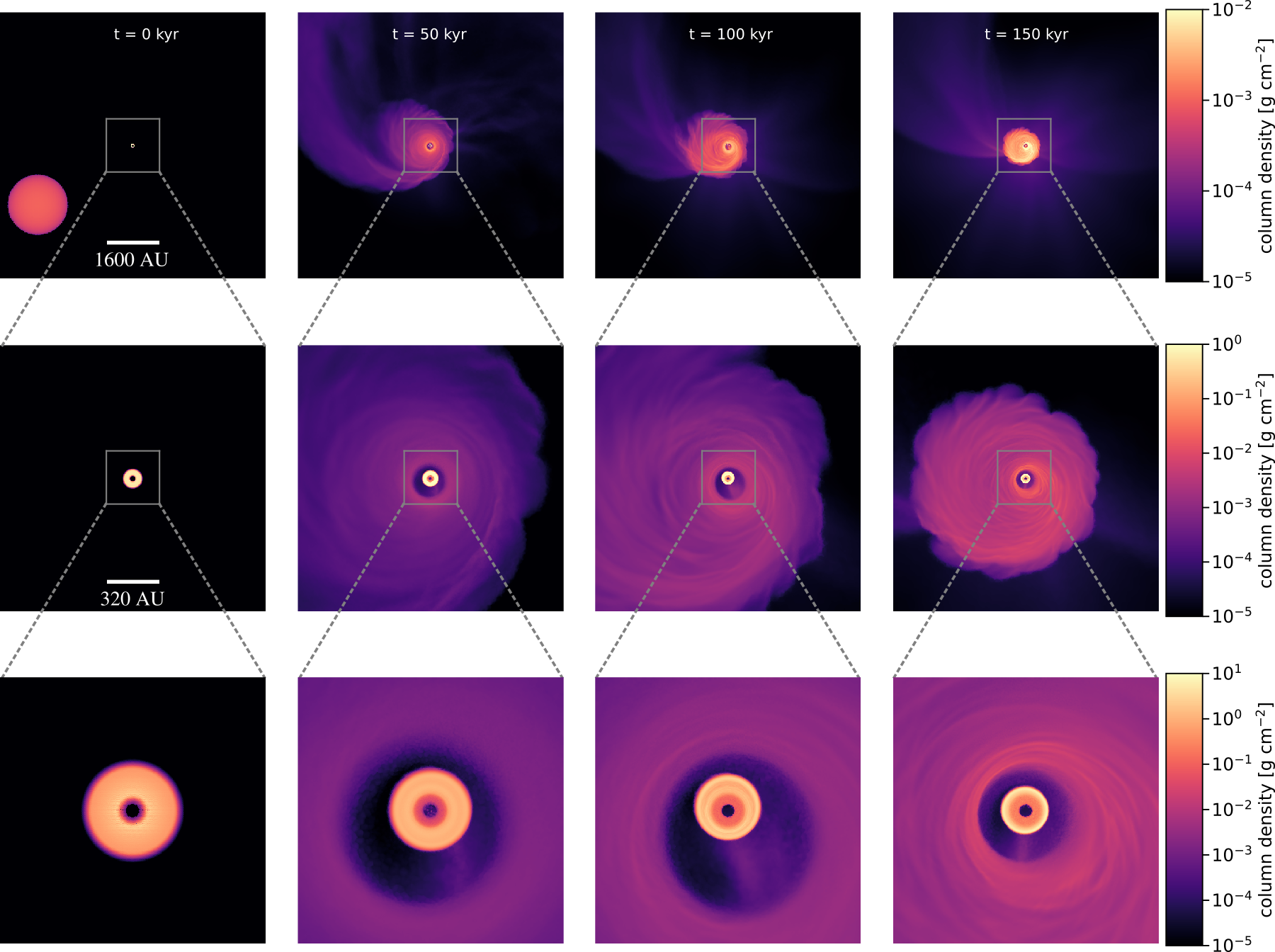
Küffmeier et al. 2021
Prograde vs. retrograde infall

Retrograde infall causes:
- counter-rotating inner and outer disk
- shrinking of inner disk
- enhanced accretion

- larger and deeper gap between disks
see also Vorobyov+ 2016
Küffmeier et al. 2021
Inner disk orientation

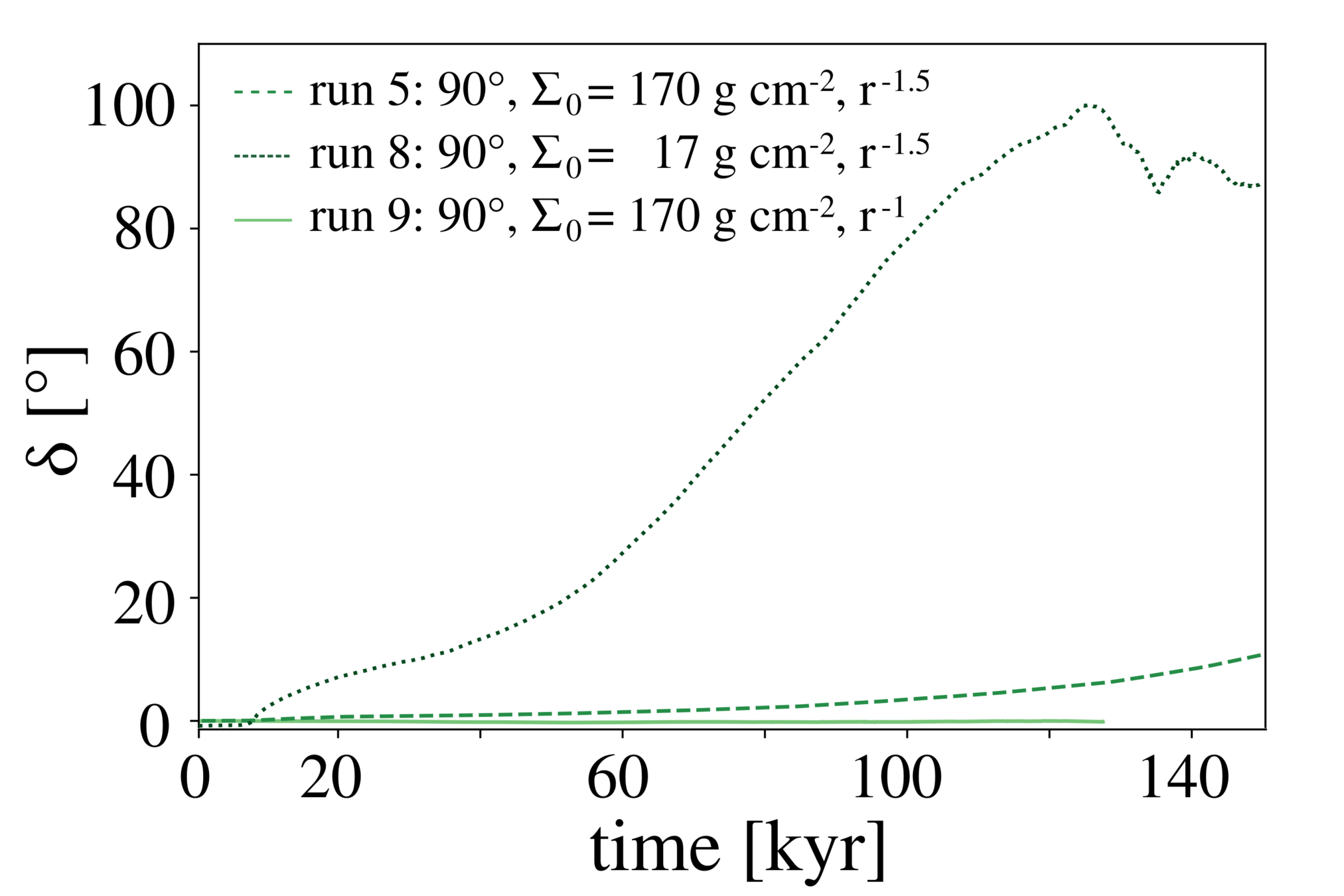
Küffmeier et al. 2021